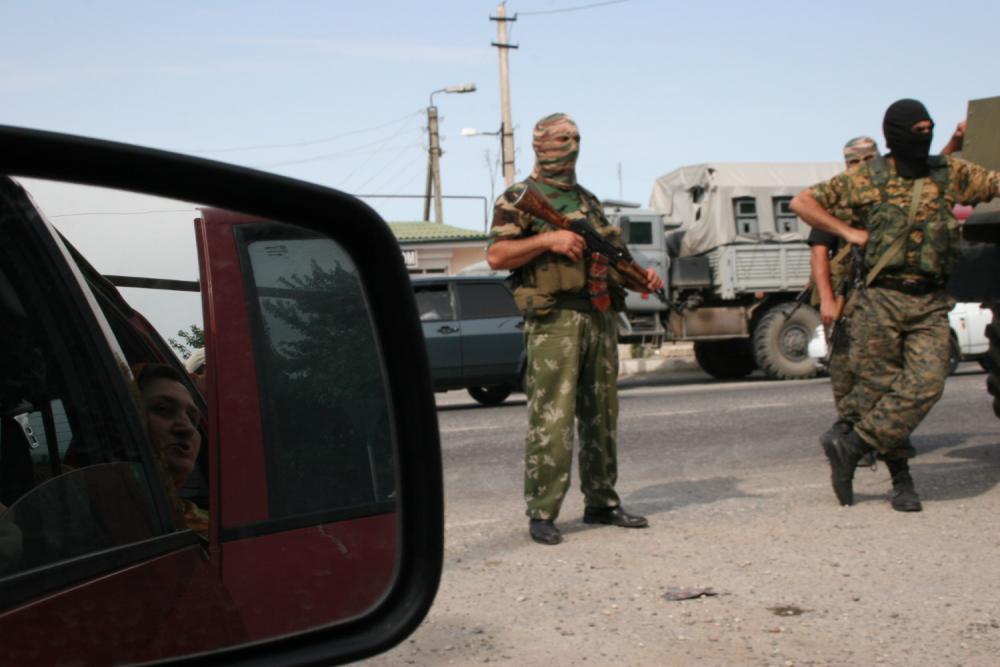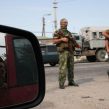
Dagestan’s Security Situation Remains Problematic Despite Increased Military Presence
Publication: Eurasia Daily Monitor Volume: 9 Issue: 123
By:

Russian authorities are trying to dramatically change the situation in Dagestan. The strategically important North Caucasian republic has a 150-kilometer (93-mile) long border with Georgia and a 315-km (196-mile) long border with Azerbaijan. The republic also has 530 km (329 miles) of coastline on the Caspian Sea.
In order to reduce the increasing intensity of Dagestan’s armed resistance, which bases its activities on jihadist ideology, Moscow began to deploy Interior Ministry personnel as military reinforcements, along with their equipment (https://stav.kp.ru/daily/25852.5/2821838/). In March, two full divisions estimated to number up to 30,000 personnel were redeployed from Chechnya to Dagestan (www.ng.ru/regions/2012-03-21/1_divizii.html). This was in addition to the two other divisions that had been stationed in the republic previously. Thus, the Russian military force in Dagestan currently tops 60,000 servicemen. In addition, Dagestan currently has nearly 18,000 police officers (https://ria.ru/defense_safety/20120329/609110864.html). There are also police forces that have been dispatched to the republic from other regions of Russia, possibly numbering over 1,200 servicemen. The troop redeployment is probably still underway: on June 20, new cargo trains with heavy military equipment, including tanks, arrived near Makhachkala (https://kavkasia.net/Russia/2012/1340187062.php). Bearing in mind that heavy armor is rarely used against the insurgents – it is generally used only to fire on the presumed forest hideouts of local rebels – this shipment is hardly accidental. The tanks might be crucial not only to the Kavkaz-2012 military exercises, but also to an incursion into Georgia, as Georgian officials fear (www.apsny.ge/2012/pol/1340521819.php).
For law enforcement coordination, Moscow established seven joint operations groups of the Interior Ministry troops, which are stationed in the most restive areas (www.riadagestan.ru/news/2012/3/26/134109/). Groups consisting of police, police special forces and the Federal Security Service (FSB), with active support of the military, were deployed in seven districts – Karabudakhkent, Derbent, Kizlyar, Sergokala, Untsukul, Buinaksk and Tsumada. Practically all of Dagestan has been covered by the military network – from Kizlyar in the north to Derbent in the south.
However, the situation in Dagestan leaves little hope for Moscow that rebel activity will decrease in the republic in the near future. There are casualties among the law enforcement personnel and the insurgents nearly every day. On June 20, a military truck was attacked near the village of Sergokala in Sergokala district. Four servicemen from Russia’s Tambov region were injured in the attack. On the night of June 21-22, unidentified assailants killed a 62-year-old woman who practiced folk healing. Such practitioners are frequently targeted by the militants in Dagestan. On June 21, a city police major was killed in Khasavyurt. On June 22, an unidentified person with law enforcement agency identification documents was killed on Imam Shamil Boulevard in central Makhachkala. According to rebel sources, the slain person was an FSB officer. That same day, an alcohol-trading retail store was blown up. Rebels often attack such stores. On June 23, a police officer was attacked in Khasavyurt, and an IED detonated on the Kavkaz highway near Derbent.
Against the backdrop of such attacks, it is strange to hear the Russian National Anti-Terrorist Committee’s statements about the situation in the North Caucasus having been turned around (www.ria.ru/defense_safety/20120621/678417854.html). A committee spokesperson, Andrei Przhezdomsky, said he regarded educating the young people about the insurgency the government’s major achievement. In Przhezdomsky’s words, the commission for rehabilitating former rebels in Dagestan, which admitted it made mistakes and repented, had a much greater impact on potential young extremists than a large-scale counterterrorism operation. It is hard to agree with the Russian security services’ representative, since during the year and a half the rehabilitation program in Dagestan has been in existence, only 32 people have surrendered, and they have not included even a lower ranking rebel commander. Indeed, all of them were people who assisted the insurgency and had thereby attracted the attention of the police and the FSB (www.yuga.ru/news/259893/).
Against the backdrop of such government claims, rebel sources allege there is an influx of new young recruits, reporting that just during two weeks in June in Dagestan’s Khasavyurt district, which borders Chechnya, up to 30 young people crossed into the forests to join the rebels. The young people reportedly moved in small groups of three to four persons in order to avoid being noticed (https://vdagestan.com/radostnye-vesti-za-dve-nedeli-k-mudzhaxidam-xasavyurta-prisoedinilis-do-30-novobrancev.htm). If this is true and not simply rebel propaganda, the local authorities in the district should be extremely worried. Youth have a lot to fear in Dagestan and it is unlikely the authorities will have young people on their side. In a bizarre incident that is only likely to elevate tensions between the security services and the local Muslim population, on June 24, the entire congregation of a mosque in the Dagestani city of Kaspiisk was taken to a police station, where the police tried to dissuade them from attending the mosque (https://dagestan.kavkaz-uzel.ru/articles/208649/). Such behavior will only deepen local resentment against the Russian-backed security structures in Dagestan, and likely create more recruits for the militants.
Indeed, Moscow mainly relies on brute force to fight the insurgency in Dagestan, although some attempts have been made to win over well-known and popular Islamic theologians. However, for the jihadists, the authority of Islamic scholars is irrelevant unless the scholars are Salafis and unequivocally recognize the militants’ actions as jihad. Moscow’s desire to use friendly Islamic scholars is apparently designed to influence not so much the jihadists themselves as the young people who are still Sufis, in order to prevent them from falling under the sway of the jihadists.
The deplorable human rights situation in Dagestan, as described by Amnesty International (https://echo.msk.ru/news/901314-echo.html), high crime rates, social inequality, corruption and clan structures that coincide with the deepening Islamization of Dagestan make Moscow’s objective to change the situation in the region to its advantage completely unrealistic and counter-productive to its efforts to halt the rising tide of insurgency in the North Caucasus.




